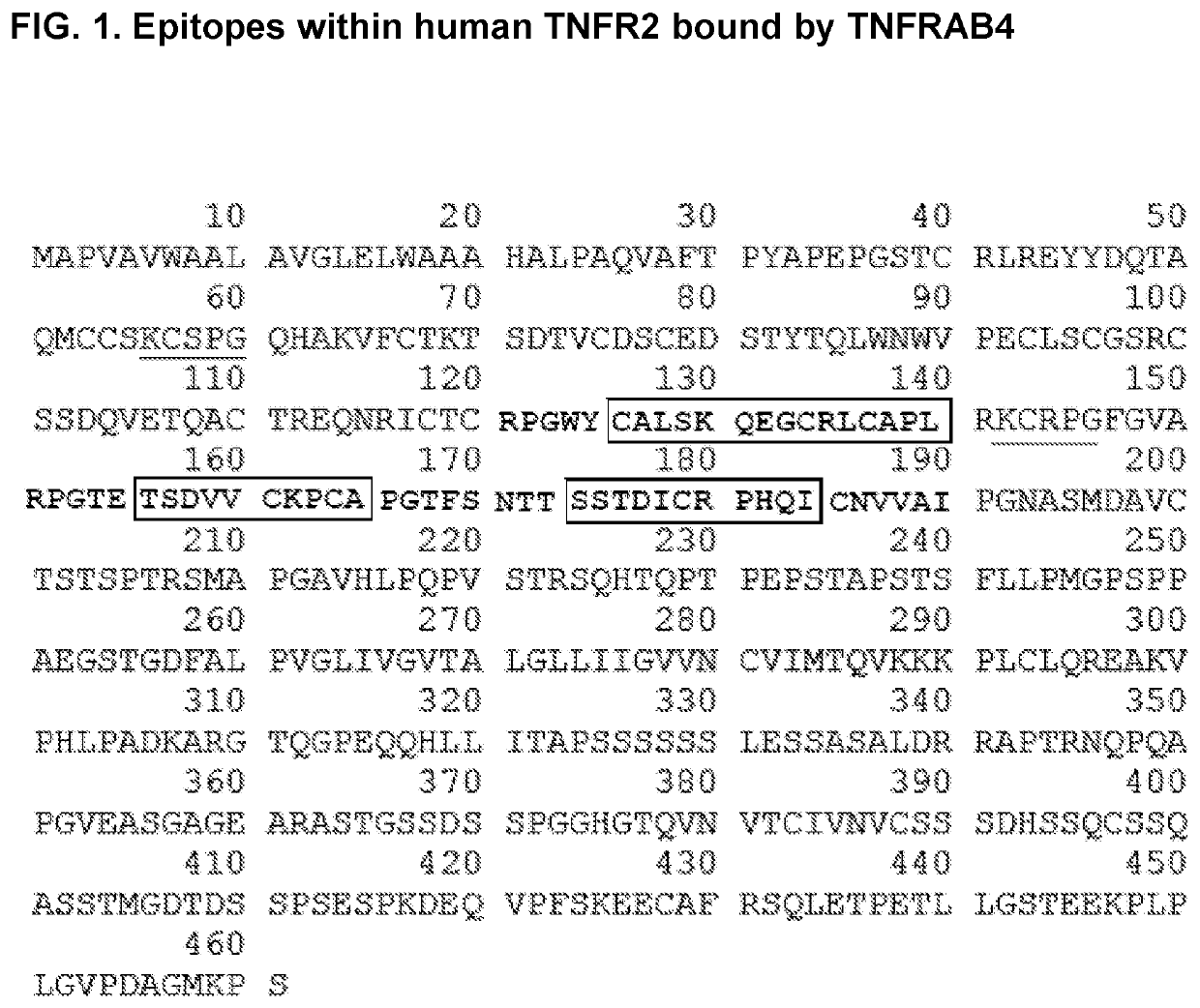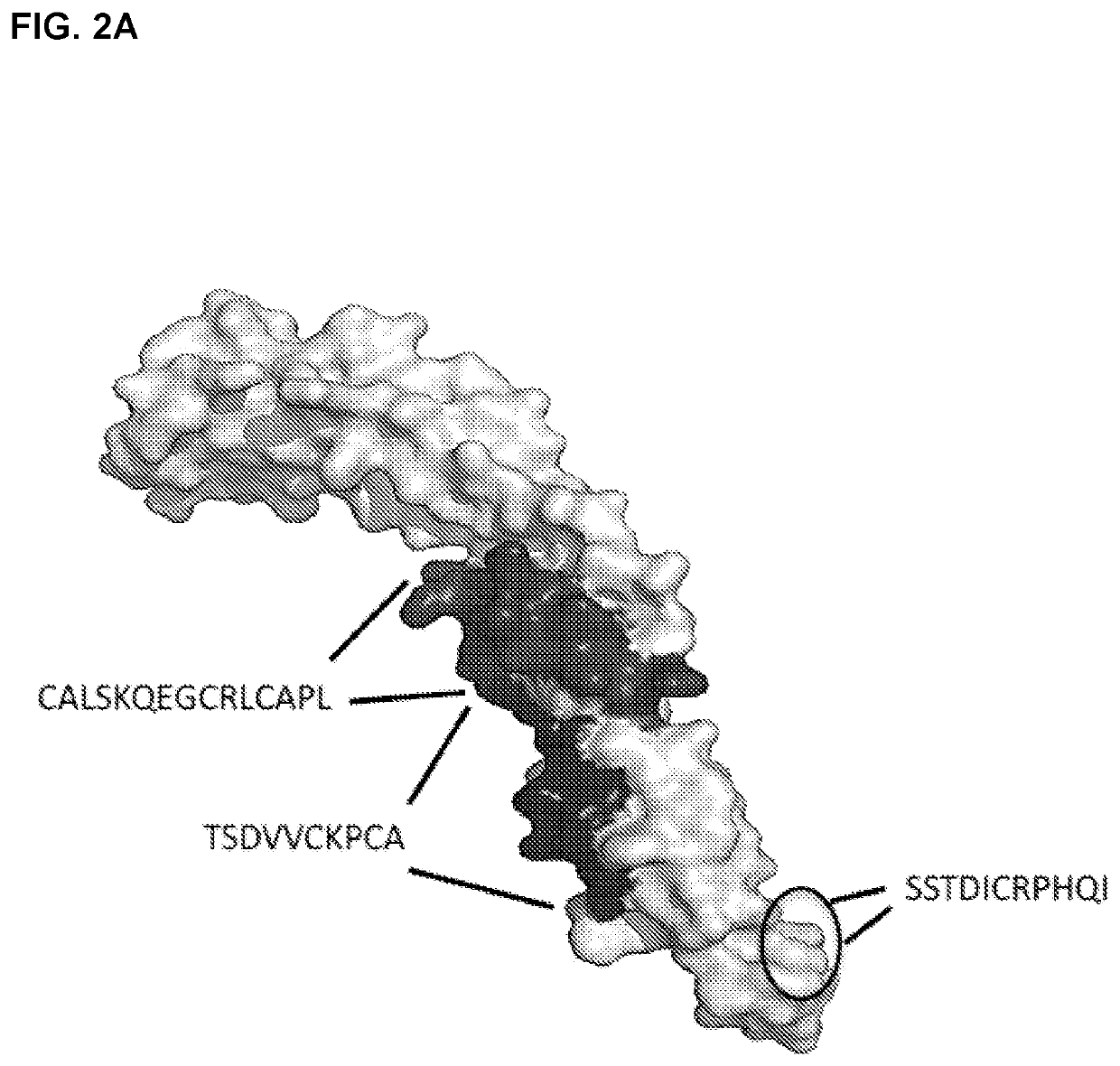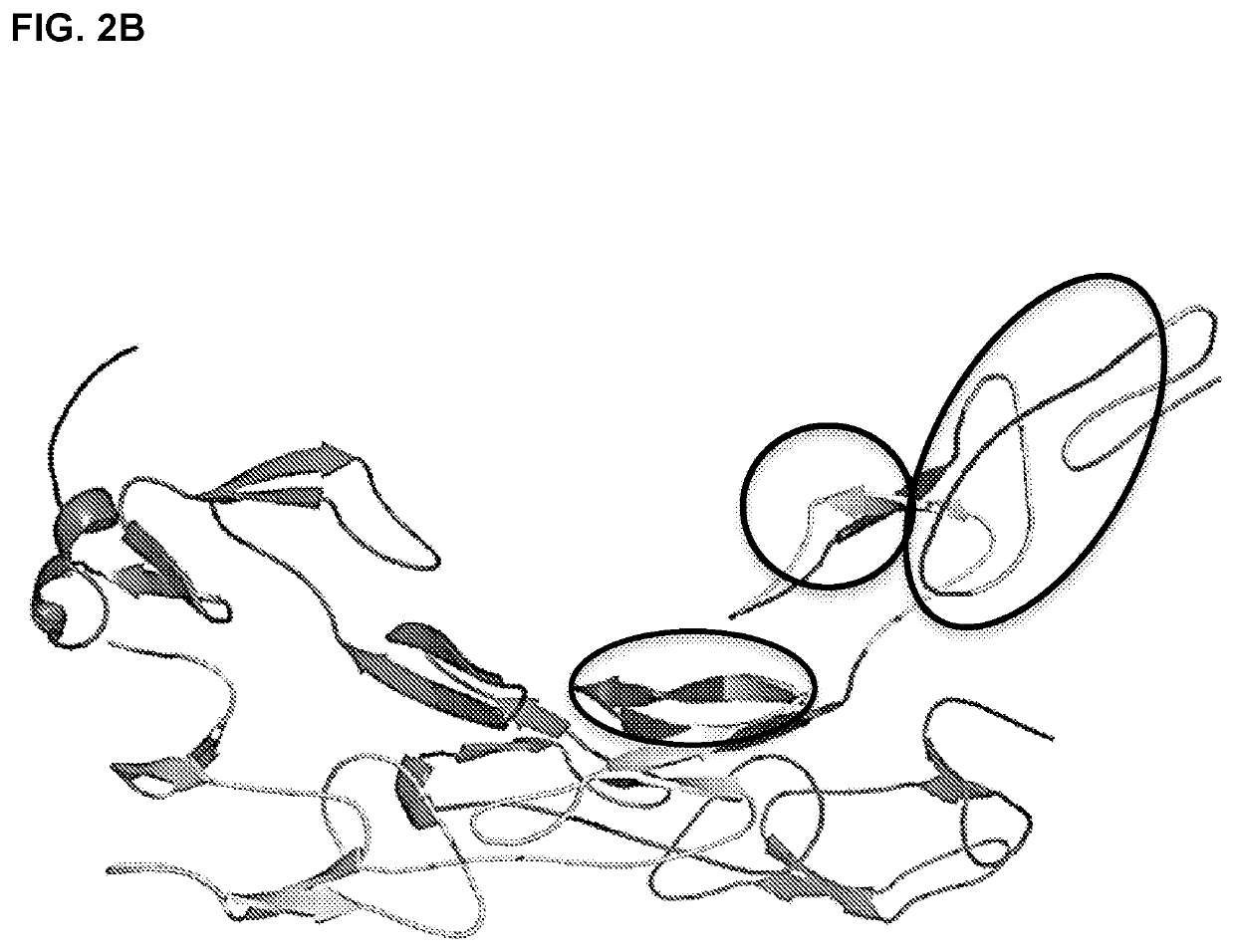Antagonistic Anti-tumor necrosis factor receptor superfamily polypeptides
a technology of tumor necrosis factor and antitumor necrosis factor, which is applied in the field of polypeptides, can solve the problems of natural propensity in the development of this therapeutic platform, and achieve the effects of inhibiting or reducing promoting mdsc apoptosis, and inhibiting or inhibiting the proliferation of mdscs
- Summary
- Abstract
- Description
- Claims
- Application Information
AI Technical Summary
Benefits of technology
Problems solved by technology
Method used
Image
Examples
example 1
he Discrete Epitopes within TNFR2 that Interact with TNFRAB4
[0483]Libraries of linear, cyclic, and bicyclic peptides derived from human TNFR2 were screened for distinct sequences within the protein that exhibit high affinity for TNFR2 antibody TNFRAB4. In order to screen conformational epitopes within TFNR2, peptides from distinct regions of the primary protein sequence were conjugated to one another to form chimeric peptides. These peptides contained cysteine residues at strategic positions within their primary sequences. This facilitated an intramolecular cross-linking strategy that was used to constrain individual peptides to a one of a wide array of three dimensional conformations. Unprotected thiols of cysteine residues were cross-linked via nucleophilic substitution reactions with divalent and trivalent electrophiles, such as 2,6-bis(bromomethyl)pyridine and 1,3,5-tris(bromomethyl)benzene, so as to form conformationally restricted cyclic and bicyclic peptides, respectively. In...
example 2
tic TNFR2 Polypeptides that Bind Specific Epitopes within TNFR2 Kill T-Reg Cells, Expand T Effector Cells, and Deplete Cancer Cells
[0492]Antagonistic TFNR2 polypeptides, such as antibodies, antigen-binding fragments thereof, single-chain polypeptides, and constructs thereof, described herein, exhibit the ability to kill T-reg cells, induce the proliferation of T effector cells, and kill TNFR2-expressing cancer cells in the tumor microenvironment. To further investigate these activities, a series of 27 TNFR2 monoclonal antibodies were identified from an ELISA-based screening assay aimed at generating new TNFR2 antibodies. The antibodies were subsequently grouped on the basis of the epitope within TNFR2 bound by the antibody or fragment thereof. For the purposes of binning antibodies into categories characterized by similar epitope-binding specificity, the human TNFR2 amino acid sequence was considered in terms of its four cysteine-rich domains (CRDs): CRD1 (amino acid residues 48-76 ...
example 3
tic TNFR2 Polypeptides that Bind Epitopes within Both CRD3 and CRD4 Exhibit the Ability to Kill Various TNFR2+ Cancer Cells
[0513]Antagonistic TFNR2 polypeptides that bind epitopes within CRD3 and CRD4 of human TNFR2, such as TNFRAB4, are capable of directly killing cancer cells that express TNFR2 antigen. To further investigate this activity, the effects of an antagonistic TNFR2 monoclonal antibody that binds epitopes within both CRD3 and CRD4 on human SW480 colon cancer cells, human cutaneous T cell lymphoma cells, and human ovarian cancer cells were assessed.
[0514]To examine the effects of an antagonistic TNFR2 monoclonal antibody that binds epitopes within both CRD3 and CRD4 on human SW480 colon cancer cells, samples of colon cancer cells were withdrawn from a human patient suffering from this disease, and the cells were subsequently incubated with various concentrations of the antagonist antibody (ranging from 0-50 pg / ml) for 7 days. As controls, populations of the isolated cell...
PUM
| Property | Measurement | Unit |
|---|---|---|
| fluorescent | aaaaa | aaaaa |
| green fluorescent | aaaaa | aaaaa |
| cyan fluorescent | aaaaa | aaaaa |
Abstract
Description
Claims
Application Information
 Login to View More
Login to View More - R&D
- Intellectual Property
- Life Sciences
- Materials
- Tech Scout
- Unparalleled Data Quality
- Higher Quality Content
- 60% Fewer Hallucinations
Browse by: Latest US Patents, China's latest patents, Technical Efficacy Thesaurus, Application Domain, Technology Topic, Popular Technical Reports.
© 2025 PatSnap. All rights reserved.Legal|Privacy policy|Modern Slavery Act Transparency Statement|Sitemap|About US| Contact US: help@patsnap.com



